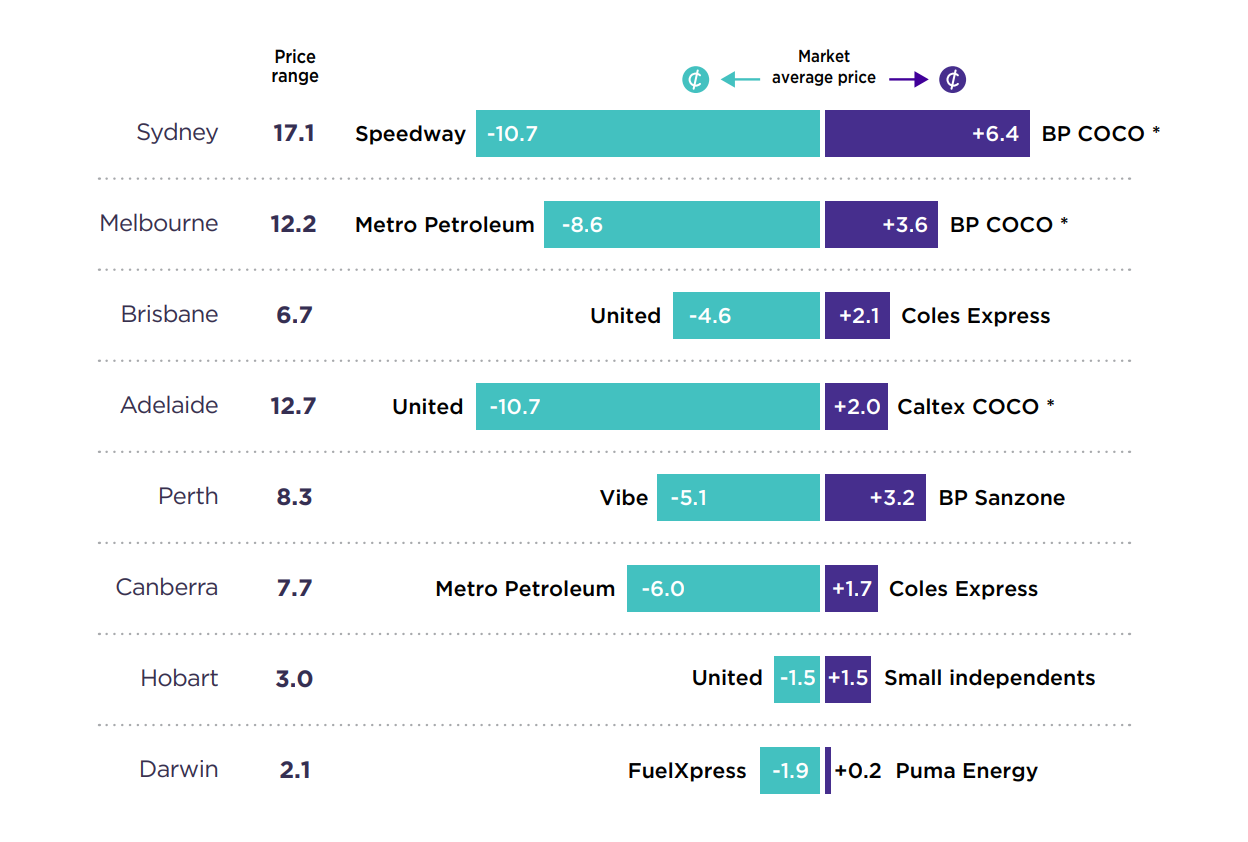Why petrol prices are soaring and how you can cut costs at the pump
Seven tips for cutting fuel use and finding cheaper petrol as Russia's invasion of Ukraine sends energy markets soaring.
The last time petrol prices were this high, Tony Abbott was Prime Minister and Donald Trump was just a reality-tv star.
Capital city fuel prices soared above $2.00 per litre in March as supply shortages in international oil markets flowed through to petrol pumps across Australia. Filling up a Toyota Corolla cost just over $100 today in Sydney on Thursday.
Higher prices aren’t limited to fuel. People are paying more at supermarkets and coffee shops as prices rise at their fastest pace in almost a decade amid widespread supply disruptions.
For those looking for ways to cut their petrol bill, we’ve put together a series of tips.
But first, why are oil prices rising?
Today’s prices have long histories. Global oil supply is tight after years of underinvestment where many producers opted to pay dividends instead of drill expensive new wells. Meanwhile, demand is booming as people return to daily commutes and factories reopen.
Russia’s war on Ukraine hit a tight market with a shock to supply. Russia is the world’s second largest crude oil exporter. The country’s energy exports remain mostly unsanctioned, however many banks and commodity traders are “self-sanctioning” and avoiding Russian crude for fear of further bans or reputational risk. Australia, the US and UK have already banned imports of Russian oil.
More disruptions are possible. Crude prices jumped on Wednesday after Russia closed a major pipeline blaming storm damage.
International prices for refined petrol make up roughly half of what Australian’s pay at the pump. A third come from taxes, with the remainder made up of the costs and margins of refiners and retailers. The exchange rate also matters because international commodity markets are priced in US dollars.
Margins and taxes are relatively steady. International prices are not. Singapore Mogas 95, the benchmark for local prices, rose 48% in 2021. It’s up another 20% since the Russia’s invasion.
Those watching international prices should expect to see them flow through within about ten days, according to the Australian Competition & Consumer Commission (ACCC).
Will they go higher?
Oil markets are notoriously fickle, but the consensus currently leans bullish.
Doug King, head of RCMA Asset Management’s US$425 million Merchant Commodity fund, is forecasting oil between US$200 and US$250 this year, according to the Financial Times. Ben Luckock, co-head of oil trading at Trafigura, one of the world’s largest commodity trading houses, sees a peak of US$150 by mid-year. Speaking with Bloomberg last week, commodity hedge fund manager Pierre Andurand floated the possibility of US$200 a barrel.
Ed Morse, who heads commodities at Citi, is one of few bears. He sees oil falling near US$60 later this year, reports the FT.
Drivers can take solace that his contrarian calls have been right twice before, in 2008 and 2014.
So, how can you save money on fuel?
Pick the right time
Petrol prices move up and down in regular cycles over the course of a fortnight or month, and consumers should try and time their purchases for the low point, says the ACCC.
These cycles are part of retailers’ pricing strategies and are not related to wholesale costs.
As of Wednesday, prices in Sydney, Melbourne, Brisbane and Adelaide are in the downwards part of the cycle now, says the ACCC. It expects them to decrease further and suggests consumers delay buying if possible.
There’s no evidence that petrol prices are cheaper just before public holidays and long weekends, according to the regulator.
Pick an independent retailer
For the many Australians who don’t have the luxury of waiting to fill up, shop around.
A Sydney motorist could have saved $445 in 2020 had they chosen the cheapest retailers over the most expensive, according to the ACCC.
Independent retailers were the cheapest over 2019 and 2020, when the ACCC ran its most recent research. In Sydney that meant Speedway; Metro Petroleum in Melbourne and Canberra; United in Brisbane, Adelaide and Hobart; Vibe in Perth; FuelXpress in Darwin.
The same research found 87% of people bought petrol from the same or one of the same few places. Time to consider looking elsewhere.
Lowest and highest priced major retailers in major capital cities in 2020
Annual average price difference from the market average price (AUD cents)
Source: "Independent chains generally have the lowest prices", ACCC Report, June 2021
Use an app
For up-to-date information, use one of the many public and private fuel tracking apps and websites.
According to the NSW government app FuelCheck, more than a dozen service stations in Sydney sold sub-$2 petrol as of Thursday morning.
Other options include the RACV in Victoria, Compare the market, Fuel Map, Motor Mouth and Petrol Spy.
When you’re behind the wheel
Keeping revs low, filling up tires and slowing down before the red light are three easy ways to cut petrol consumption when driving, according to Russell Hahn, owner of Hahn Automotives in Sydney.
“The main area where people go wrong is speeding up to the traffic light,” says Hahn. “Don’t be the first one to stop at the stop sign or the red light." Speeding up, only to stop and start again from stationary burns up fuel, he adds.
Hahn also recommends keeping engine revolutions per minute (RPM) under the 3,000 mark, saying “there’s no rush to get to 60”. Regular maintenance and full tires help too.
And, for those that can, “catch the bus”.


